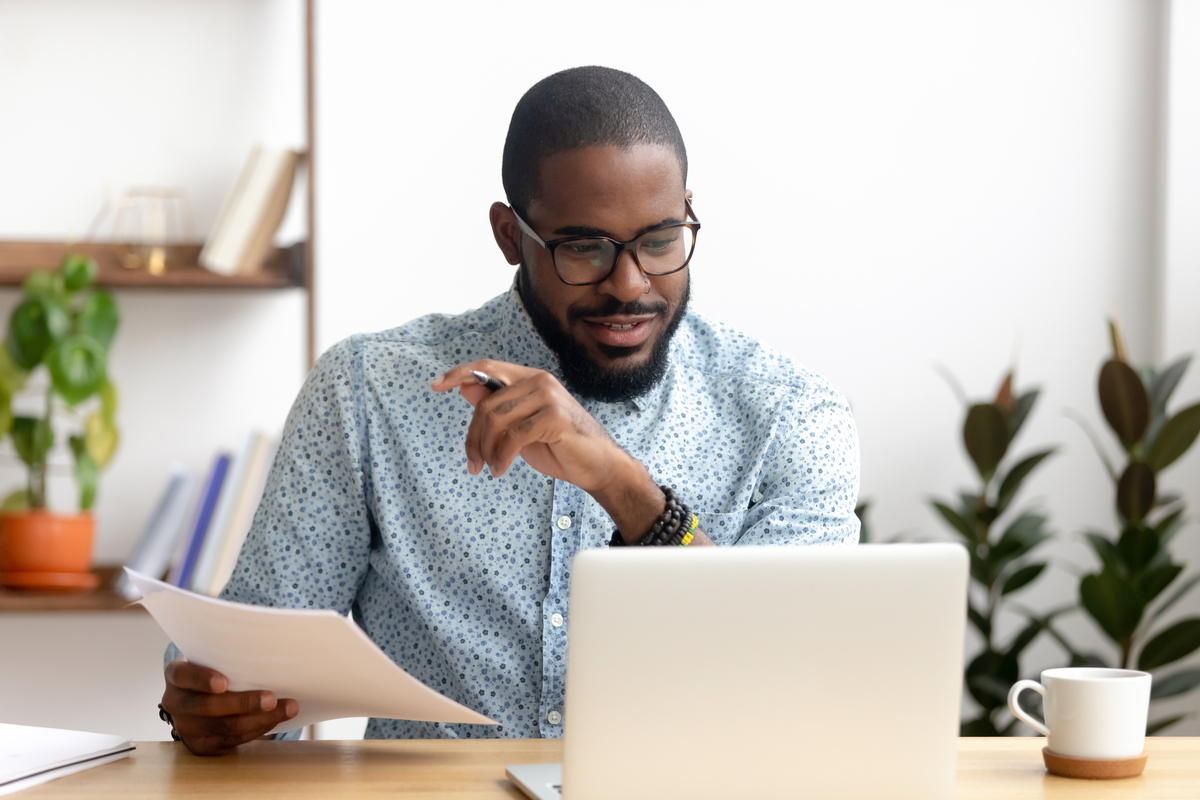We asked our providers what they look for when approving a funding request, and many use the Debt-Service Coverage Ratio (DSCR) to make this critical decision. We want you to be able to see your DSCR before you request a loan, so we built a small business loan calculator that does just that.
Our tool should help you get an idea of whether you’ll be considered for funding. To get the most out of our new tool, look at these frequently asked questions about DSCR.

The debt-service coverage ratio can pertain to corporate, government, and personal finance. When referring to corporate finance, the ratio is often used to estimate a business’s accessible cash. It reveals to prospective and current investors whether a corporation has adequate revenue to take on new debt.
Our tool should help you determine whether you’ll be considered for funding. Look at these frequently asked questions about the DSCR ratio to get the most out of our new tool.
You can also use the formula below:
DSCR = Net Operating Income / Annual Debt Service
Where to get these components:

Imagine a company with a verifiable annual income of $400,000. It wants to take out a four-year, $60,000 loan with 5% interest. It already has a monthly credit obligation of $10,000.
The company’s estimated monthly business income would be $33,333, and its estimated monthly debt service would be $11,500. The company’s DSCR would be 2.90, showing that the business would likely be stable with the added credit costs.
Banks and lenders evaluate a borrower’s debt-service-coverage ratio to help determine company stability and risk of default. When an individual’s debt-service coverage ratio falls below one, this indicates a negative cash flow. Therefore, it can be assumed that the applicant will not be able to meet ongoing debt responsibilities without the help of external funds. For instance, a debt-service coverage ratio of 0.90 translates to a net operating income sufficient only to cover 90% of the annual debt obligations. Small business with a ratio of 0.90 indicates that the company must depend partly on its reserves to meet its debt requirements. As a result, many lenders deny loan applications from these types of applicants. However, others may fund on the condition that the borrower presents reliable funds and resources aside from their income.
On the other hand, if the debt-service coverage ratio is above one but still close to it, the company is still unstable, and any disturbance may cause a decrease in cash flow, leaving them unable to meet their debts. In such cases, a lender may require that the borrower keep a certain level of debt-service coverage ratio throughout the life of the loan.
The lowest debt-service coverage ratio a lender will accept depends on the circumstance. For example, if the debt service is flourishing, then loans and lines of credit are more accessible to borrowers.
There are several main uses of the ratio:
Small business owners will sometimes use a debt-service ratio calculator to check what the lender sees before applying for a loan.
The math a lender will use to determine if you qualify for a loan is relatively simple. As a result, many providers only need minimal information to get started.
Our debt-service coverage calculator asks for your verifiable annual income and your monthly credit obligations. Your verifiable annual income represents what your business earns during one calendar year. Your monthly credit obligations are what you currently pay each month to your creditors.
The equation compares the money you make to the debt you owe. It’s used to determine your loan eligibility. You can figure out your Debt-Service Coverage Ratio (DSCR) right now using our small business loan calculator. Our tool will also show you your estimated monthly debt payment, so you can determine how much you’ll owe each month.
Of course, a provider will look at more than just your DSCR. Your credit rating, business stability, financial history, and other factors will be considered before a provider offers you a loan or sets your interest rate.
There are multiple coverage ratios that lenders may consider. For instance, some lenders will look at a company’s interest coverage ratio (ICR) when making a loan decision. ICR is not the same as DSCR. Instead, it is the amount of interest the company needs to pay on its debt compared to its equity. To calculate ICR, divide your earnings before interest and taxes (EBIT) by the interest payments due for a certain period.
While this calculation is different from DSCR, it serves the same purpose. Lenders use ICR to determine a company’s stability. Therefore, a higher ICR indicates a better financial outlook.

Typically, you will need at least a 1.20 DSCR to be prequalified for a small business loan.
Providers don’t like their loans to default. Either they recover the money through collections (which is expensive), or they never see that money again.
Too many defaults can put a lender out of business.
So, a lender will use your DSCR to help figure out how much of a risk it is to lend to you. If the number is higher, they figure there’s a better chance you will repay the funding.
A business or individual can improve their ratio by increasing net operating income. That might be possible by following these steps:
The debt-service coverage ratio is a functional equation to determine creditworthiness, especially underwriting commercial real estate and business loans. It can also be beneficial when evaluating a tenant’s financials and securing funds for owner-occupied real estate. However, while the debt-service coverage ratio is a straightforward equation, it is sometimes misinterpreted, so it is essential to understand the equation before using it.
Yes. After you hit the “calculate” button, you’ll be shown your estimated monthly debt-service, which is the amount of money you’d pay each month when you combine your new loan amount with your existing loans.
Our business calculator will show you your monthly business income along with an estimation of what you’ll be paying your creditors each month. The amount of money coming in needs to be higher than the amount going out. How much higher? That’s where the DSCR comes in. The ratio needs to be at least 1.20.
While other factors need to be looked at, comparing incoming money to outcoming money is a quick way to determine whether you’ll be able to repay a loan. The number is helpful not just to your provider, but it can also help you assess whether it’s wise to obtain funding. Remember, just because you’re approved for a loan doesn’t mean you can afford it.
What Other Factors Does a Provider Use to Determine My Eligibility?
To be approved for a loan with one of our providers, you’ll need to be a U.S. citizen, at least 18 years of age, have an address, and meet other requirements. Many of our providers will only work with businesses that have been around for longer than three months. It should be noted that while alternative small business funding can be easier to qualify for than traditional bank loans, there is no guarantee that you will be approved for financing by any of our lenders.

After you’re all done with our calculator, you can click the “funding request” button to start your search for working capital. Our system is built to help you contact a respected provider from our network.
Our number one goal is to see you get funded. So, we’ll try to set you up with a funding provider that can make that happen.
We hope you like our small business funding calculator. It’s easy to use, but don’t let its simplicity fool you.
The calculator helps you guess if you’ll be approved for funding or not – even before you reach out to a funding source. This knowledge can help you correctly set your loan expectations to create a realistic loan plan. If you have any questions about our DSCR calculator or anything else on our site, please feel free to reach out.